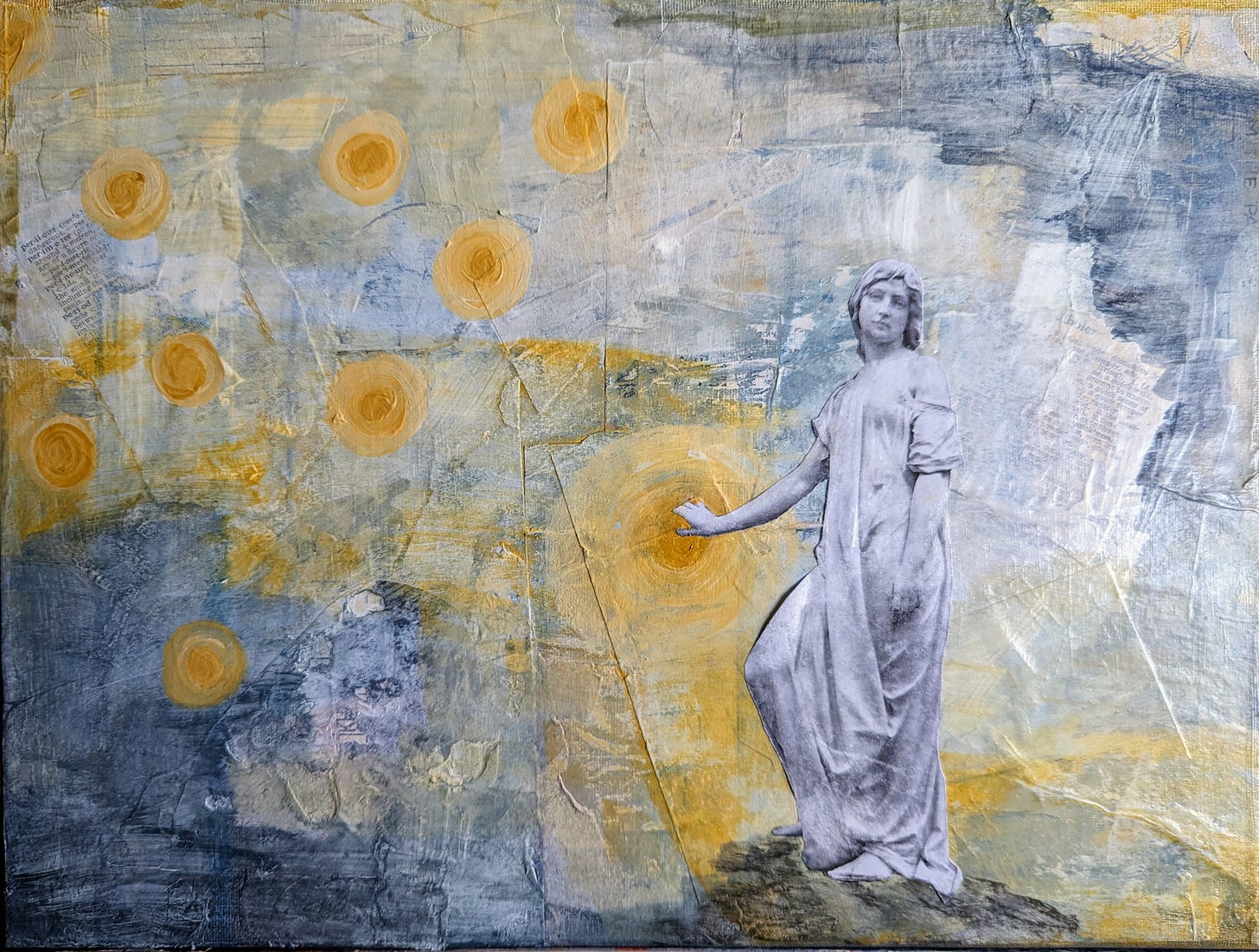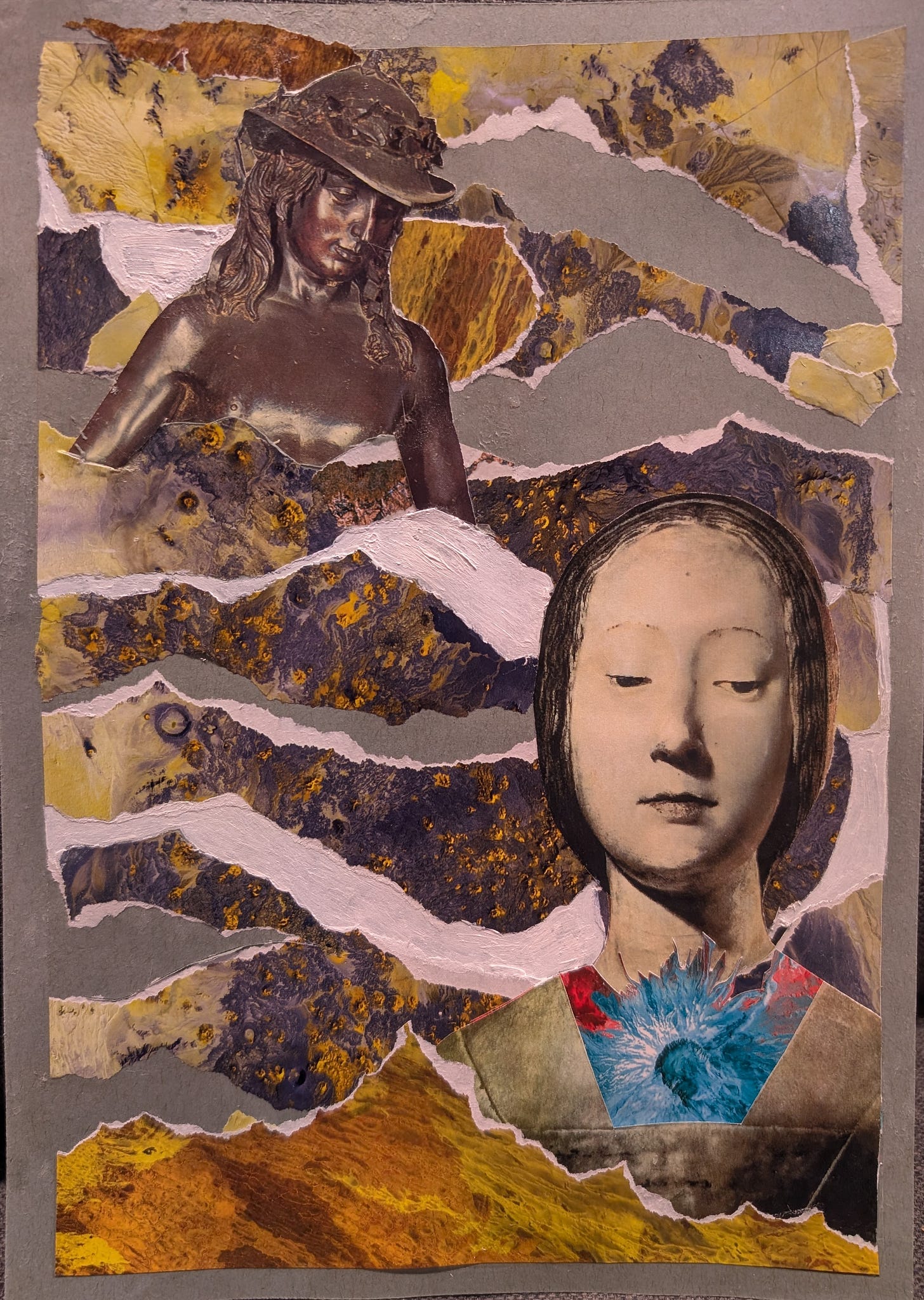Statuesque
Stillness & remembrance...and two creative prompts
As kids, we played a version of tag called Statuemaker. If you were tagged, you had to freeze in that position until a free player retagged you or until all the players were frozen. Part of the fun was to see how long you could hold your position. It was silly, and none of us ever approached the grace of the statues I used to study at the cemetery.
Yes, I said cemetery. One part of growing up in a small town with five cemeteries (one where there were more dead people than live ones) was that we often rode our bikes on cemetery roads. The ones closest to our house were old with few new burials and were therefore quiet and safe. They had almost no traffic and lots of interesting statues to study. And I loved everything about the statues. Their stillness. Their idealized faces. Their draped garments. The feathered wings of angels, the skinfolds of cherubim. Flash forward to today. I still love public statues in fountains and parks and business plazas. Statues in museums, of course. Religious statues (Buddhas, Giant Rio Jesus, altar pieces and icons, etc). And yes, cemetery statues. (Honestly, the Recoleta Cemetery in Buenos Aires has some of the most beautiful statuary I’ve ever seen.)
A statue seems to me the height of remembrance, a stoic, lasting memorial to the beauty of what once was, a way to honor that which we deem most important. Stillness and Remembrance.
But stillness and remembrance are concepts in opposition. Memory is an act. Stillness is an absence of action. Perhaps this is part of a statue’s appeal —that in its “frozen” position, it is keeping some feeling or idea alive. That in representing life or belief in action, it creates a sense of calm.
I have been thinking about these ideas in collage/mixed media art, using photographs of statues to create external and internal landscapes. Here are a few examples:
Since statues are a semblance of life, I find them perfect to pose in imitation or imagined places. And though statues (like most art) seek to memorialize, their beauty often points out the fallacy of legacy, becoming a reminder that nothing lasts.
Prompts:
Find a statue of a human figure that appeals to you. It could be a thin tall Giacometti, an abstract Henry Moore, an idealized Michelangelo, a Caryatid on the Parthenon. Consider its backstory, either fictionalizing the figure with a narrative OR considering the creation of the piece of art. Tell its story in a poem or piece of flash.
Consider the concept of stillness and brainstorm a list of places, times, artworks, people, etc., that evoke the essence of that word. Try to write a poem (or create a piece of art) that embodies stillness.




Thank you!
Your artwork is beautiful!